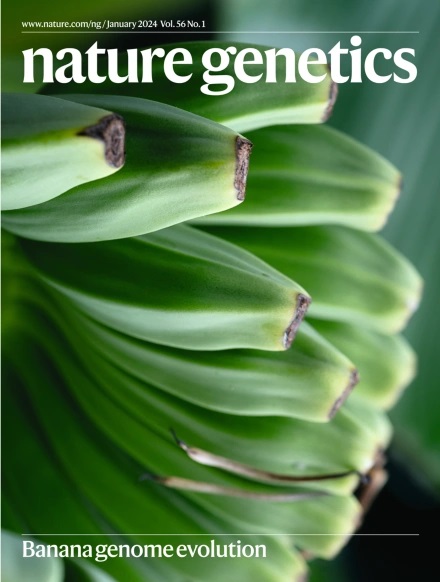不同信号依赖性增强子激活程序的eRNA转录检查点
IF 31.7
1区 生物学
Q1 GENETICS & HEREDITY
引用次数: 0
摘要
信号和配体依赖通路通过激活调控增强子程序发挥作用的证据表明,“检查点”策略可能强调许多不同调控增强子的激活。在这里,我们报告了基于共享增强子RNA (eRNA)转录检查点释放的几种急性信号和配体依赖性增强子激活程序的共同分子机制。它需要募集dna依赖性蛋白激酶催化亚基(DNA-PKcs)-磷酸化RING finger repressor (kr本文章由计算机程序翻译,如有差异,请以英文原文为准。


An eRNA transcription checkpoint for diverse signal-dependent enhancer activation programs
The evidence that signal- and ligand-dependent pathways function by activating regulatory enhancer programs suggests that a ‘checkpoint’ strategy may underline activation of many diversely regulated enhancers. Here we report a molecular mechanism common to several acute signal- and ligand-dependent enhancer activation programs based on release of a shared enhancer RNA (eRNA) transcription checkpoint. It requires recruitment of a DNA-dependent protein kinase catalytic subunit (DNA-PKcs)-phosphorylated RING finger repressor (Krüppel-associated box)-associated protein 1 (KAP1) as a modulator, inhibiting its association with 7SK and E3 small ubiquitin-like modifier (SUMO) ligase activity on the CDK9 subunit of positive transcription elongation factor b (P-TEFb). This facilitates formation of an activated P-TEFb complex, licensing eRNA elongation. Overcoming this checkpoint for signal-dependent enhancer activation occurs in diverse pathways, including estrogen receptor-α, NF-κB-regulated proinflammatory stimulation, androgen receptor and neuronal depolarization. Therefore, a specific strategy required to convert a basal state enhancer P-TEFb complex to an active state to release a conserved checkpoint is apparently employed by several functionally important signal-regulated regulatory enhancers to implement the instructions of the endocrine and paracrine system. Phosphorylation of KAP1 by DNA-PKcs at enhancers regulated by diverse stimuli prevents association with 7SK small nuclear RNPs and CDK9 SUMOylation, thereby activating the P-TEFb complex and promoting enhancer RNA transcription.
求助全文
通过发布文献求助,成功后即可免费获取论文全文。
去求助
来源期刊

Nature genetics
生物-遗传学
CiteScore
43.00
自引率
2.60%
发文量
241
审稿时长
3 months
期刊介绍:
Nature Genetics publishes the very highest quality research in genetics. It encompasses genetic and functional genomic studies on human and plant traits and on other model organisms. Current emphasis is on the genetic basis for common and complex diseases and on the functional mechanism, architecture and evolution of gene networks, studied by experimental perturbation.
Integrative genetic topics comprise, but are not limited to:
-Genes in the pathology of human disease
-Molecular analysis of simple and complex genetic traits
-Cancer genetics
-Agricultural genomics
-Developmental genetics
-Regulatory variation in gene expression
-Strategies and technologies for extracting function from genomic data
-Pharmacological genomics
-Genome evolution
 求助内容:
求助内容: 应助结果提醒方式:
应助结果提醒方式:


